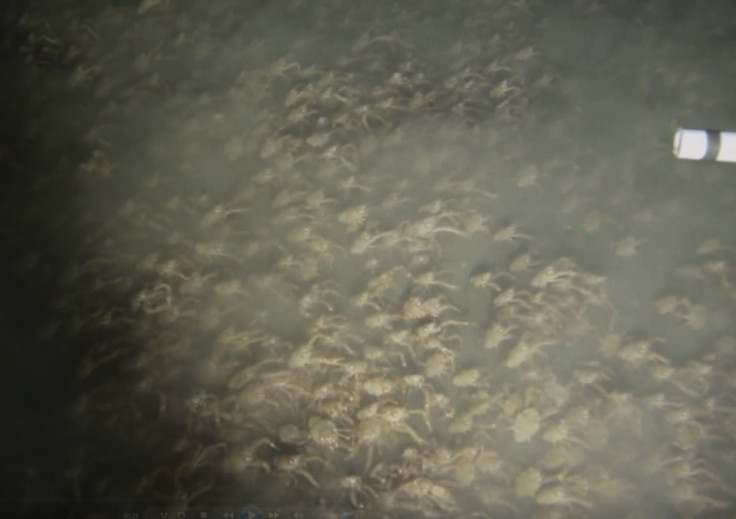Mesmerising film shows thousands of red crabs swarming off Panama coast
A mesmerising film of thousands of red crabs swarming off the coast of Panama has been released by scientists. The unexpected footage was captured in April last year, as part of a month-long expedition to the Hannibal Bank Seamount.
As the submarine got closer to the bottom of the seamount, researchers noticed the water became very murky. Jesús Pineda, a biologist at Woods Hole Oceanographic Institution and chief scientist on the cruise, said: "There was this turbid layer, and you couldn't see a thing beyond it. We just saw this cloud but had no idea what was causing it.
"As we slowly moved down to the bottom of the seafloor, all of a sudden we saw these things. At first, we thought they were biogenic rocks or structures. Once we saw them moving – swarming like insects – we couldn't believe it."

The crabs were identified as Pleuroncodes planipes, which are normally found off the west coast of Baja California, the Gulf of California and the California Current. In a study documenting the Panama sighting, published in PeerJ, researchers say this is the farthest south the species has ever been found. "To find a species at the extreme of their range and to be so abundant is very unusual," Pineda said.
The water of the Hannibal Bank Seamount where they were found is very low in oxygen. Previously, this species has been found in similarly low oxygen conditions, which researchers say could provide refuge from predators.
Two months after the footage was captured, thousands of red crabs washed up on the coast of Southern California in a mass stranding related to El Niño conditions. DNA analysis later revealed these to be the same species of crab – although the crabs involved in the stranding was from a different population to those seen in Panama.

"It is significant that P. planipes can be simultaneously abundant at the two distant locations and at two different habitats," they wrote, adding the high densities of the red crabs probably impacted food webs at the seamount.
They said more research is needed to assess the distribution and abundance of the species and its role in Pacific seamount and continental shelf habitats. They now plan to return to the Hannibal Seamount to try to find out how the area supports such high levels of biodiversity, and how these communities might respond to future climate change.
© Copyright IBTimes 2024. All rights reserved.






